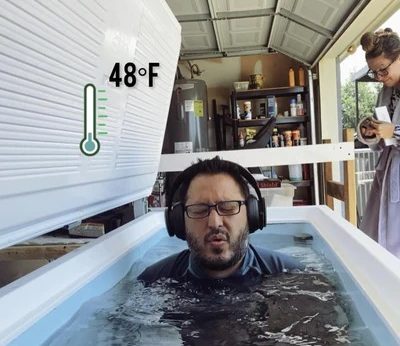Red Light Therapy Benefits!
THE ISSUE & THE SOLUTION
In stressed and aging cells, the mitochondria produce nitric oxide (NO), which competes with oxygen for binding sites and prevents oxygen from binding to those sites during the respiratory process, which converts blood sugar into cellular energy. The body effectively controls excess nitric oxide with rest, an antioxidant-rich diet, and sleep. When the body is under a lot of stress, it cannot eliminate nitric oxide as quickly as it is made. Oxidative stress is a result of the accumulation of NO, which also produces ROS (reactive oxygen species). The harmful processes of inflammation, cell death, and the production of the genes linked to cancer, Alzheimer’s, osteoarthritis, and other disorders are started by reactive oxygen species.
Cytochrome c Oxidase (CcO), a protein in the mitochondria, absorbs red and near-IR (infrared) light, causing mitochondrial not to be dissociated from CcO for oxygen transport to resume as normal. Then, cell function can return to its ideal state. Among many other positive intracellular reactions, this downstream impact boosts ATP (energy) synthesis. An increase in strength, energy, and recovery benefits all eleven major organ systems.

How does whole-body red-light therapy work?
Five essentials for maximizing the effects of red-light treatment:
Red light therapy has emerged as a modern-day panacea for the treatment of medical conditions with an expanding list of claimed advantages. The treatment of hair loss, depression, rheumatoid arthritis, and even cancer are among the claims made, along with those that collagen formation, immune system stimulation, and tissue healing are possible. Many people have adopted it for these reasons since it is a non-invasive and simple treatment, despite the fact that many of these claims are unsupported by clinical evidence, FDA clearance, or insurance company coverage. There are many red-light therapy devices on the market, ranging in price from cheap to expensive, and there is no agreement on the features and general efficacy of the therapy.
Although the basic science study on light treatment can be complex because it combines physics, chemistry, and biology, we will go over what red-light therapy has been shown to be beneficial for and what it is not. Biology includes cell signaling, transcription factors, proliferation, and migration. Physics includes light-tissue interactions, tissue optics, and light source characteristics. Chemistry examines light absorption, chromophores, the photo biomodulation of reactive oxygen species, and photochemical reactions. In addition, we’ll give you “5 Keys for the Best Red Light Therapy Results.

Red light therapy: What is it?
Since red light cannot penetrate deep into the body, it is only useful for treating skin problems and other superficial illnesses (dermatological applications).
The term Photo biomodulation Therapy (PBMT) now refers to the use of red light wavelengths in conjunction with one or more infrared light (long) wavelengths. Applying red and near-infrared light to tissue that has been damaged by trauma, illness, or aging is known as photo biomodulation therapy. The usage of these therapeutically identified wavelengths promotes cellular energy generation and circulation. The chromophores in the mitochondria of the body’s cells are easily able to absorb this light energy, which initiates metabolic energy activities. These light wavelengths encourage ATP synthesis, which improves energy transport inside of cells and increases cell growth and health.
PBMT improves the normal metabolic processes to lessen the negative consequences of oxidative stress. Free radical overproduction, or oxidative stress, has been connected to a variety of health problems, from wrinkles to more serious conditions like diabetes and cancer. The use of photo biomodulation therapy supports the body’s innate mechanisms for metabolizing free radicals and reducing the harm they do. This acceleration of the body’s normal healing process aids in reducing inflammation and encourages the repair of damaged tissue. PBMT improves muscular performance, speeds up and improves the quality of tissue repair, speeds up and improves recovery, and lessens discomfort. The safe and soothing PBMT method of rehabilitation has no known unfavorable side effects.


